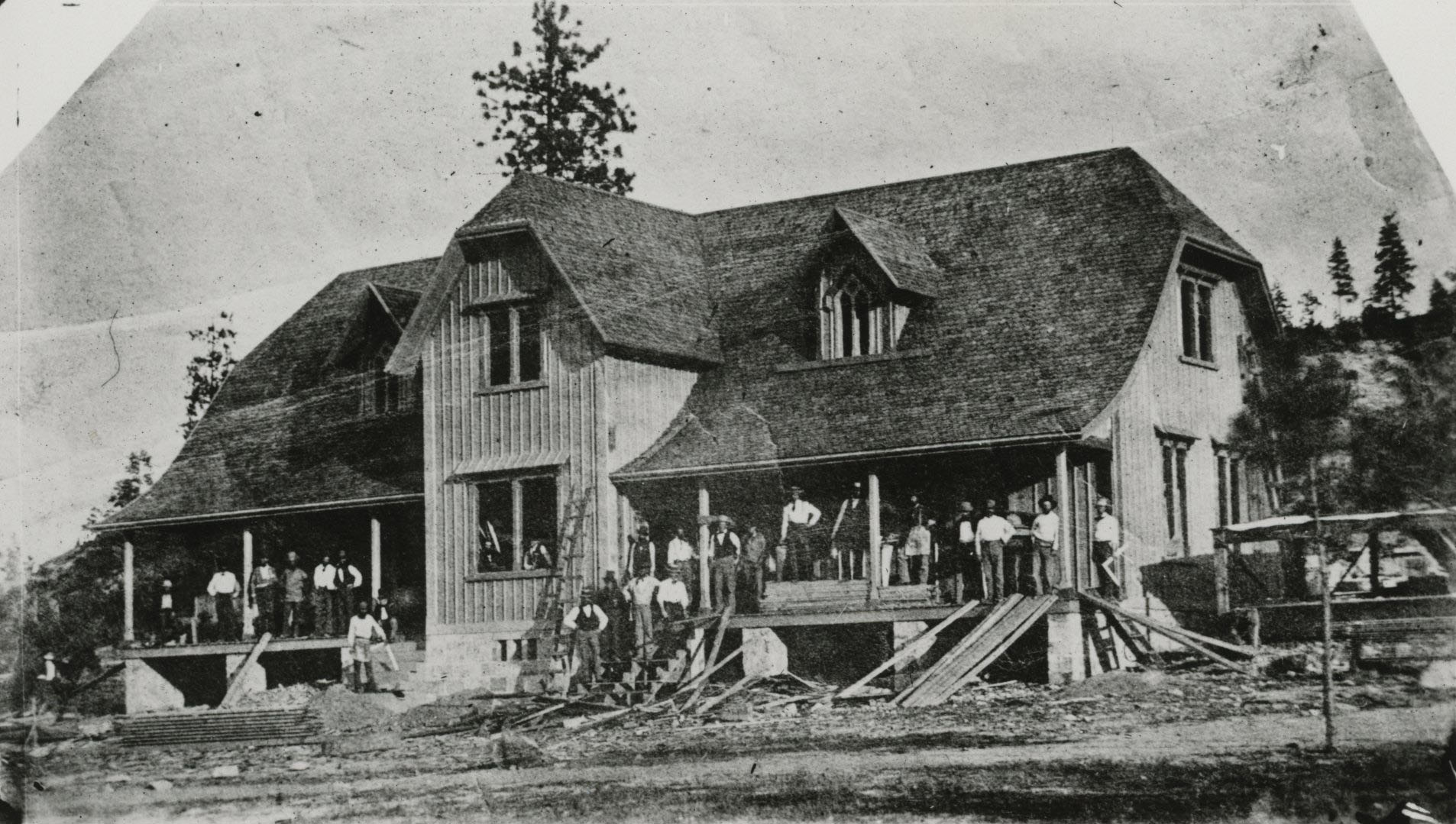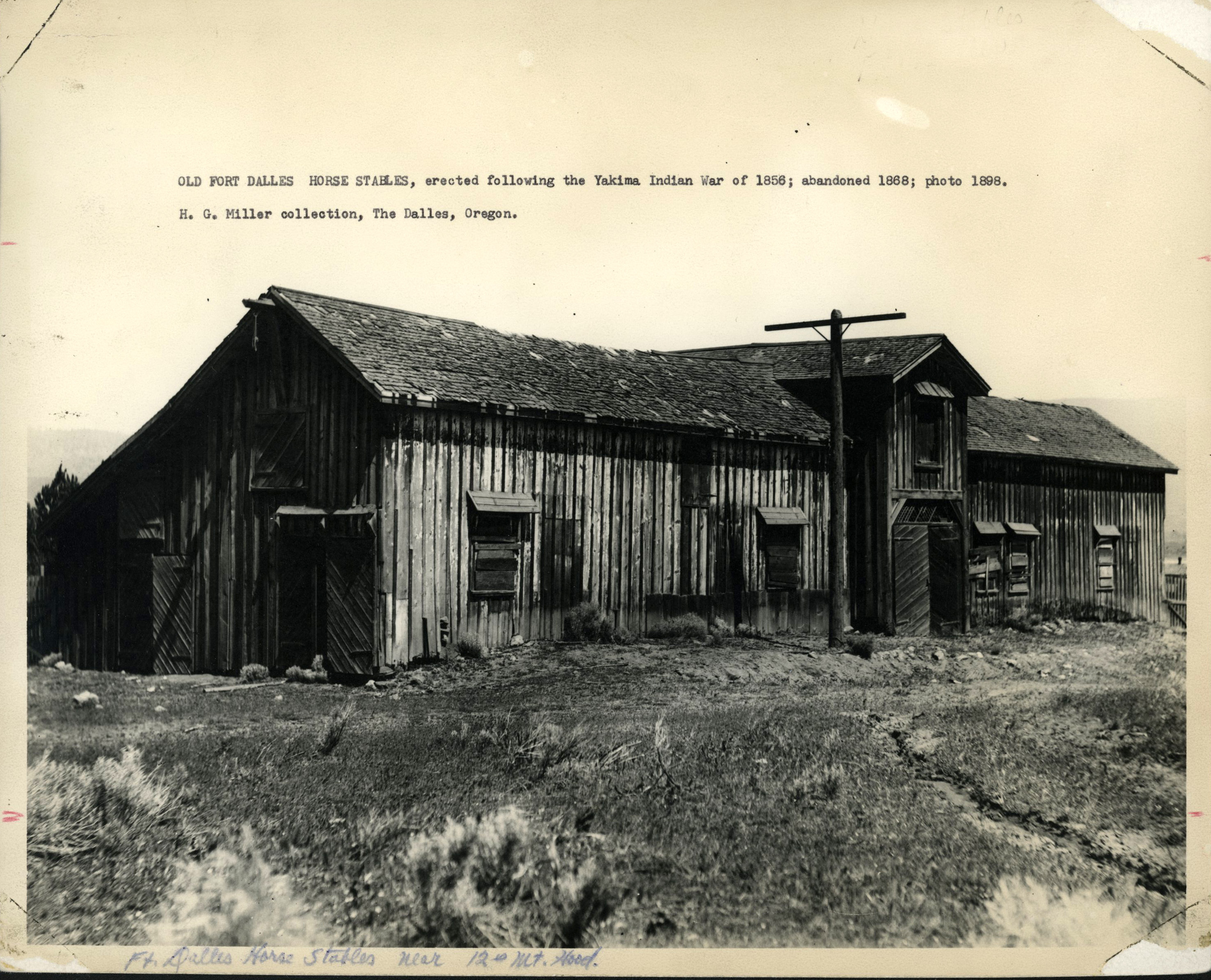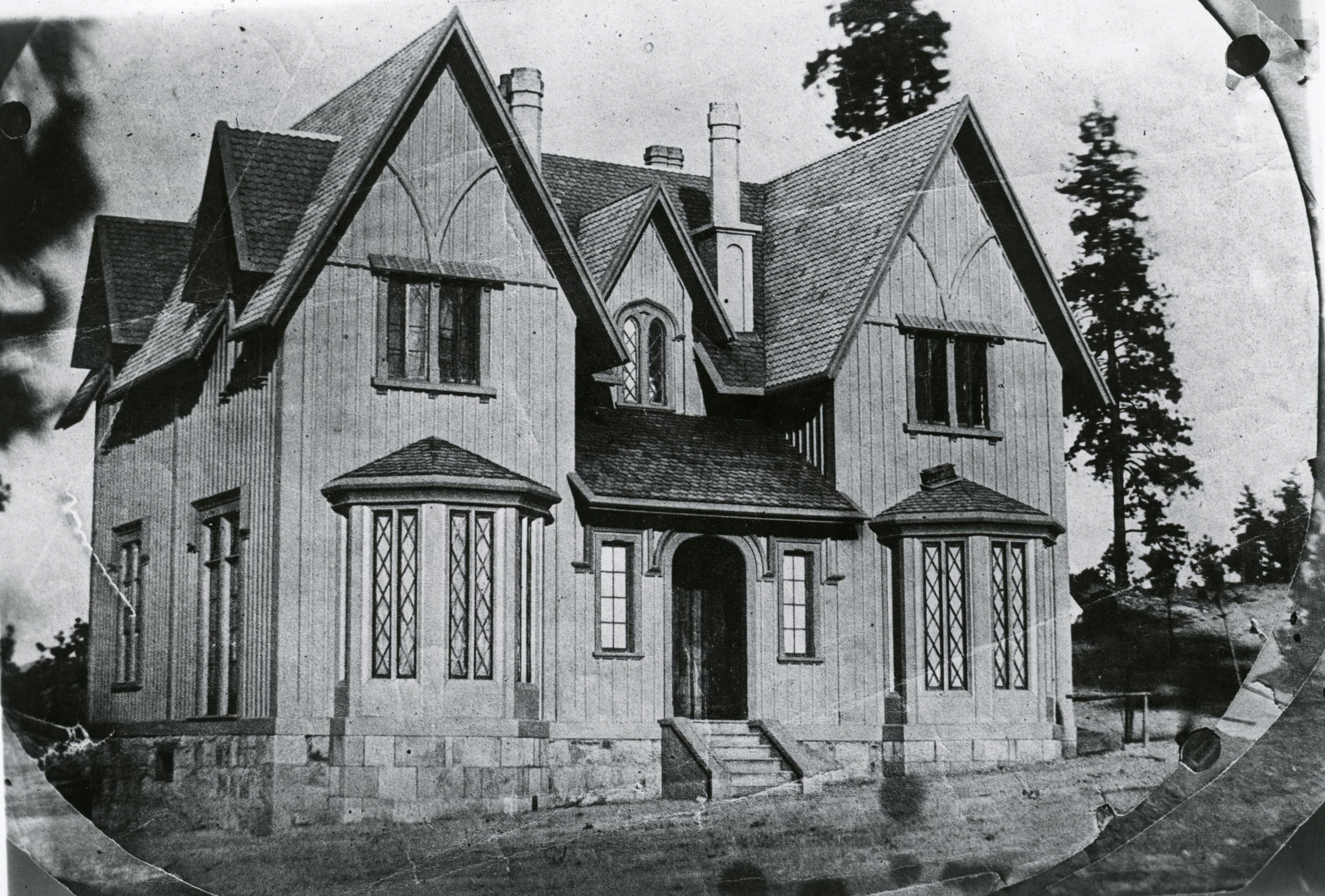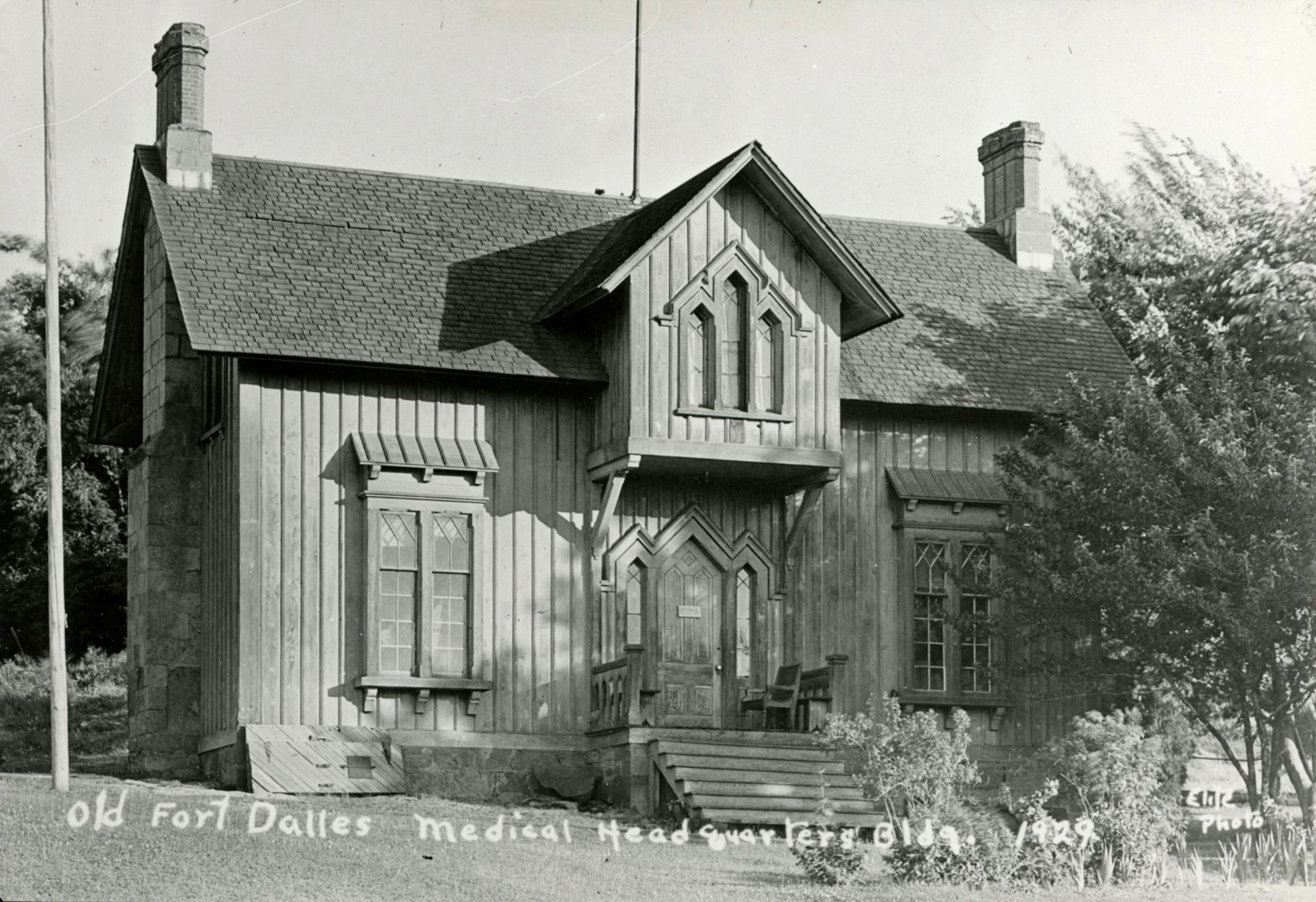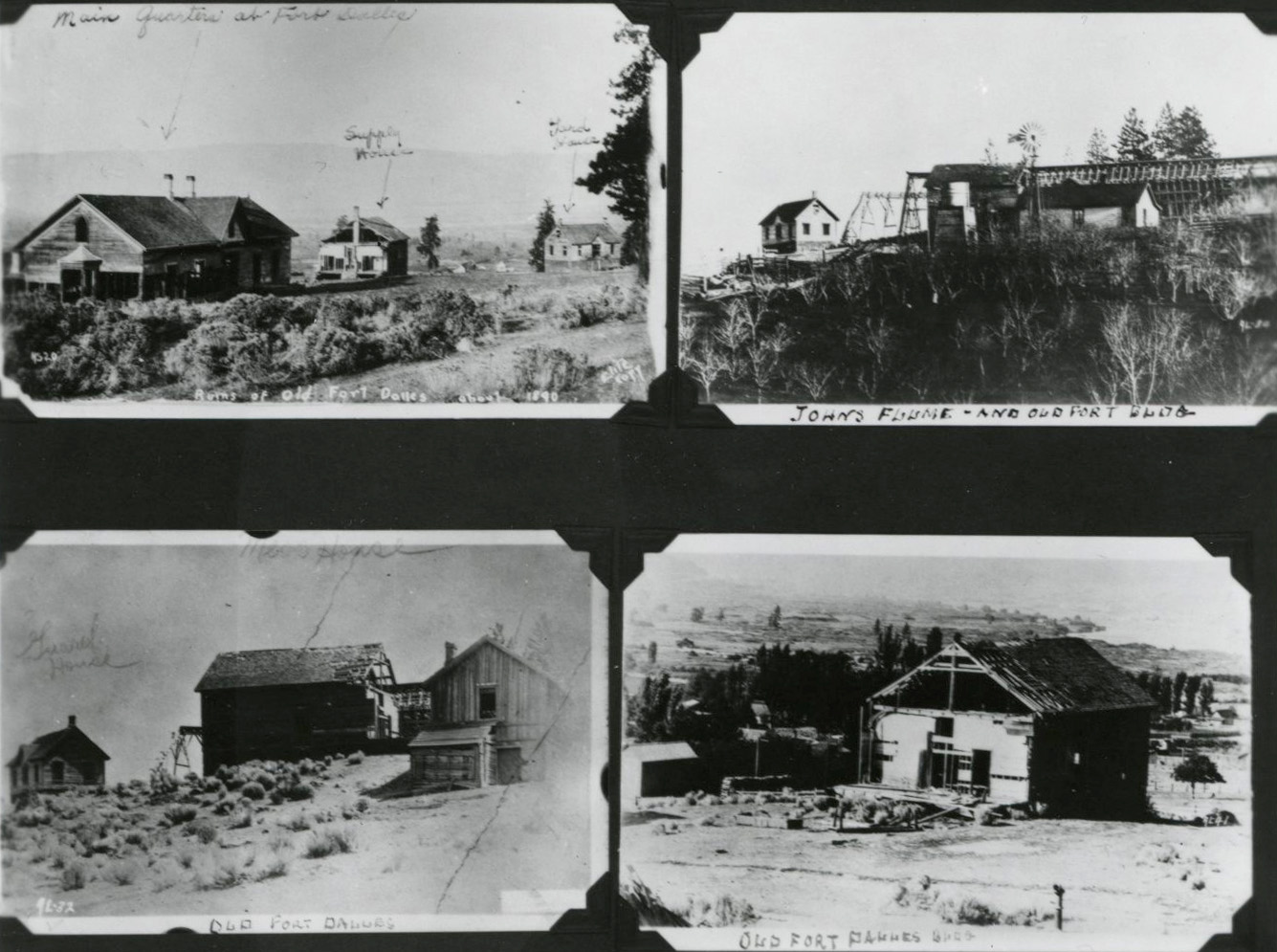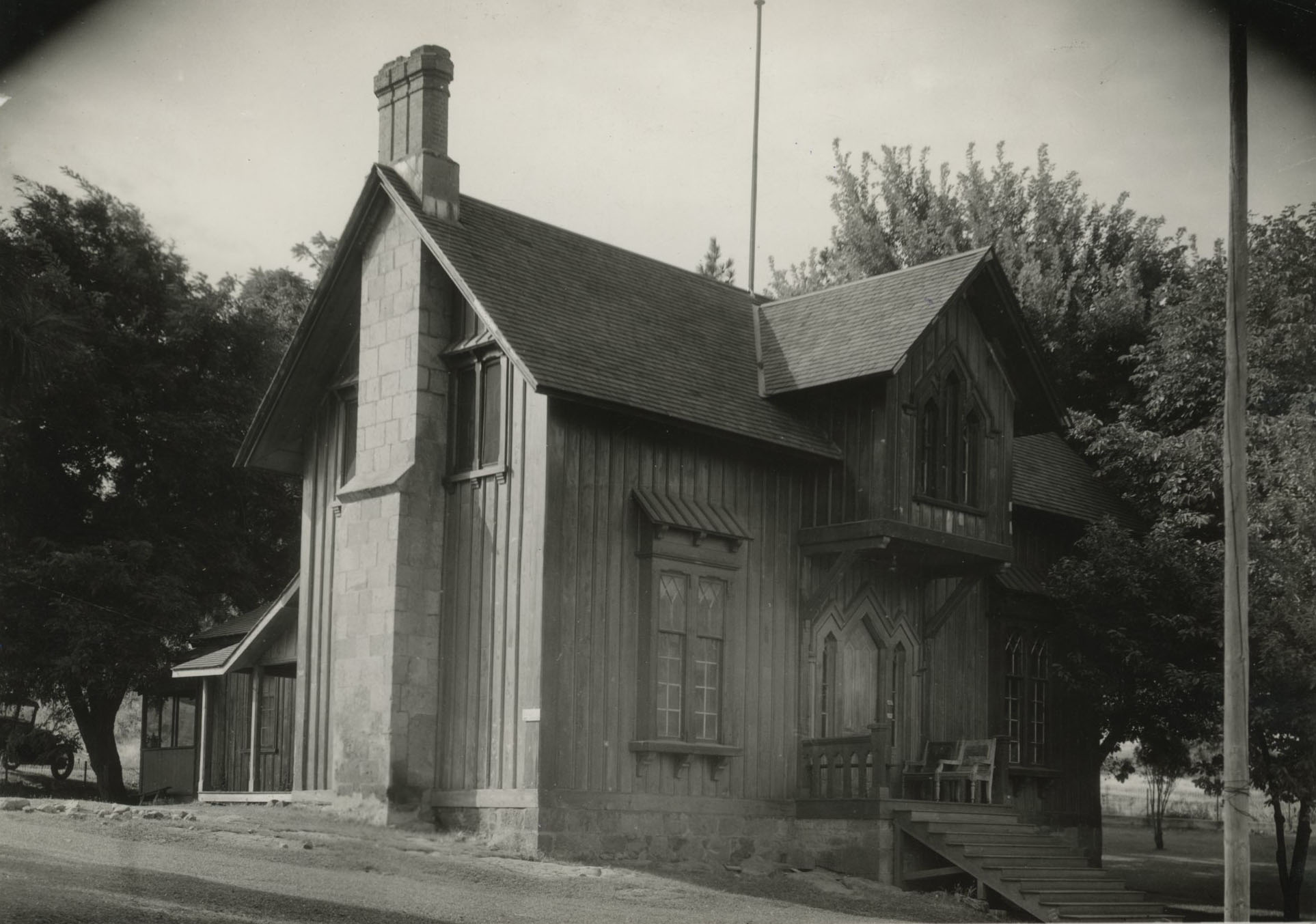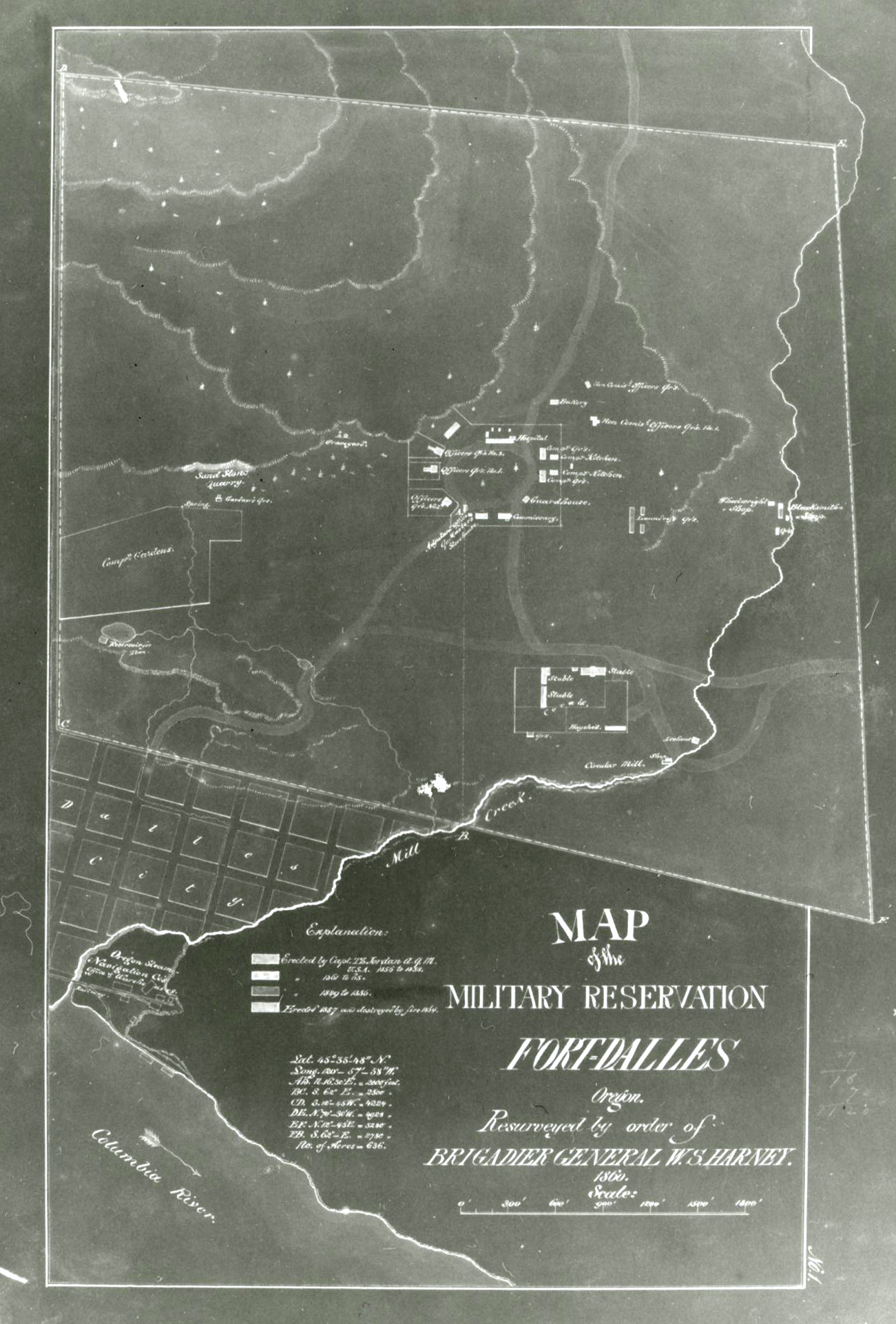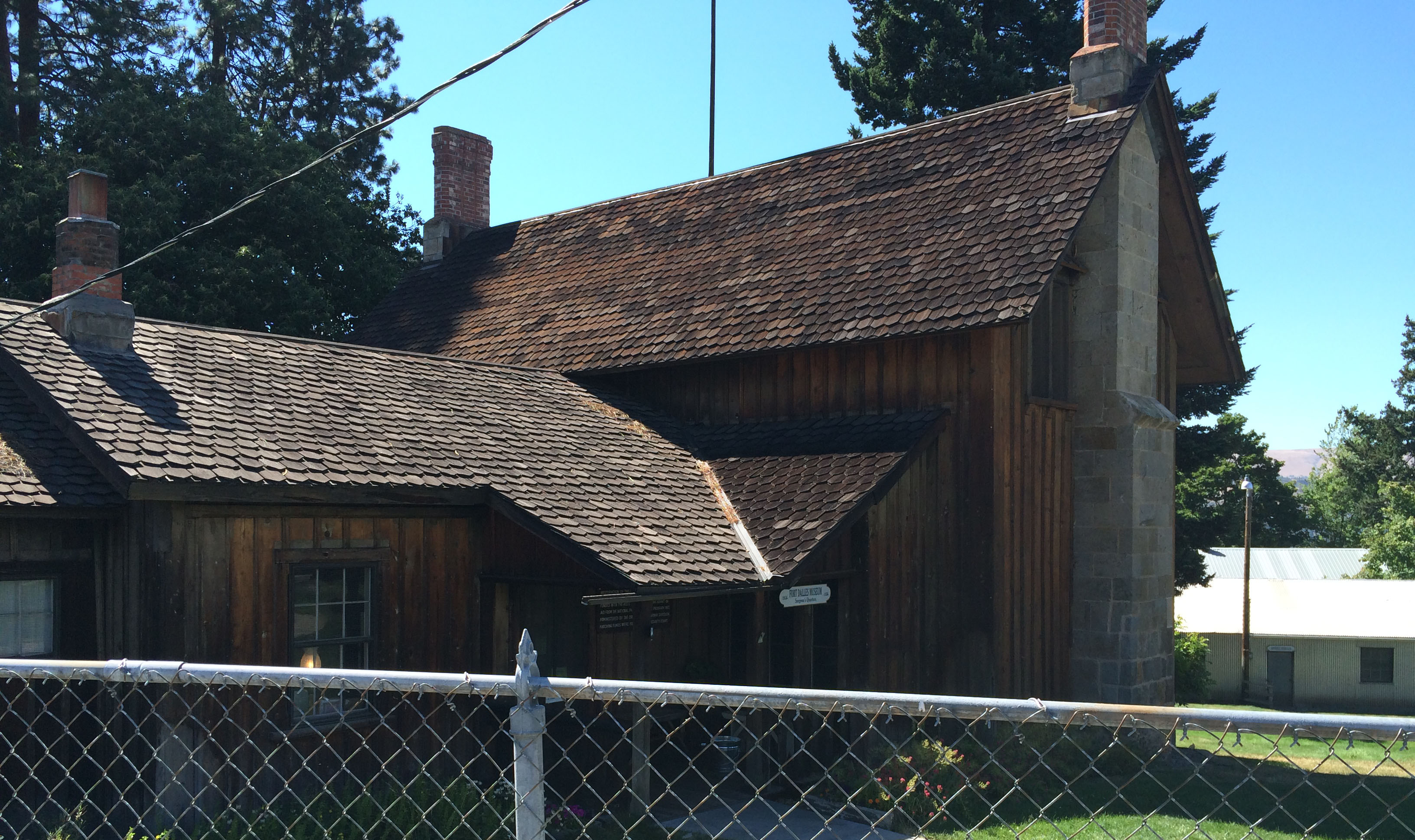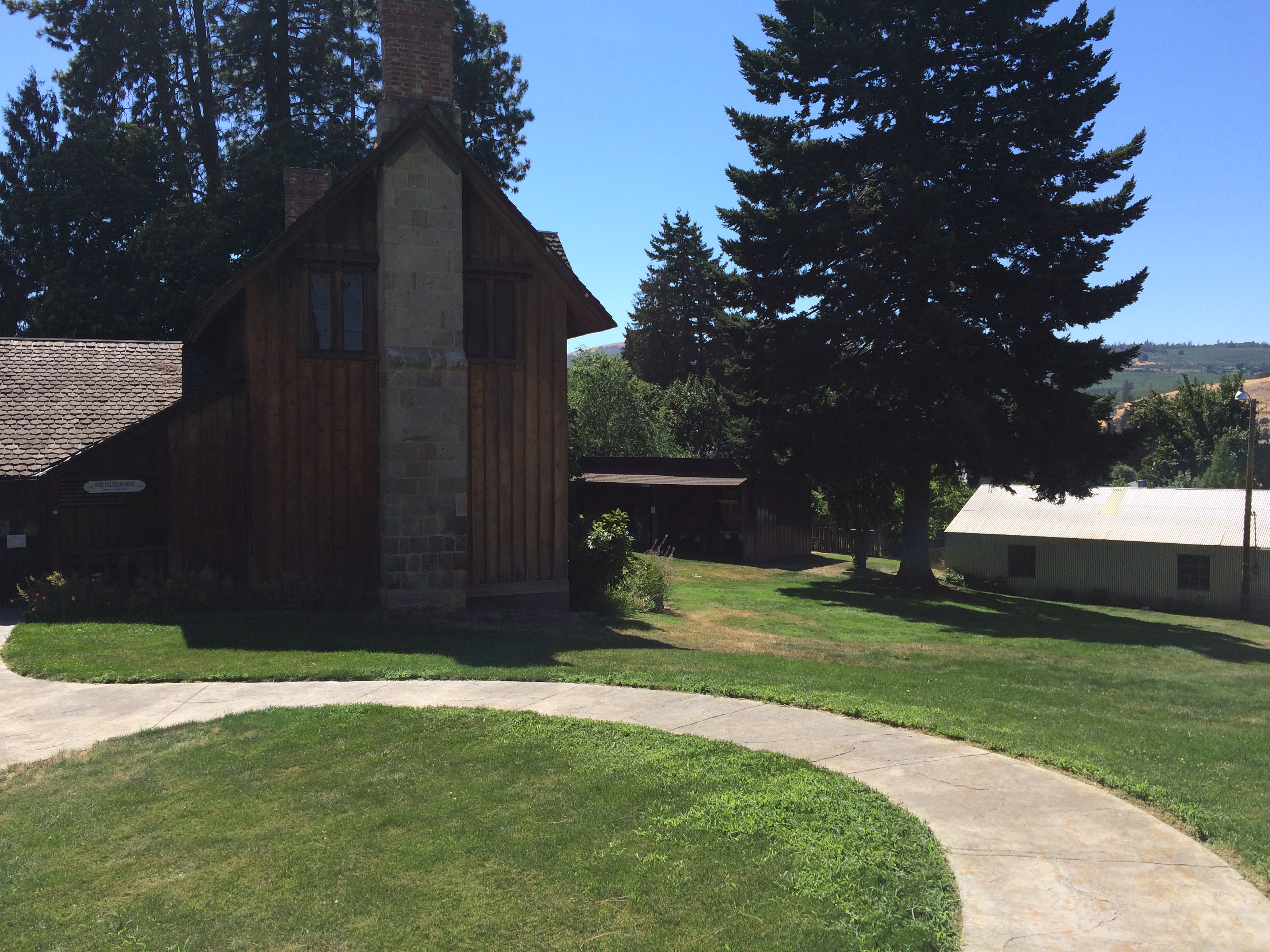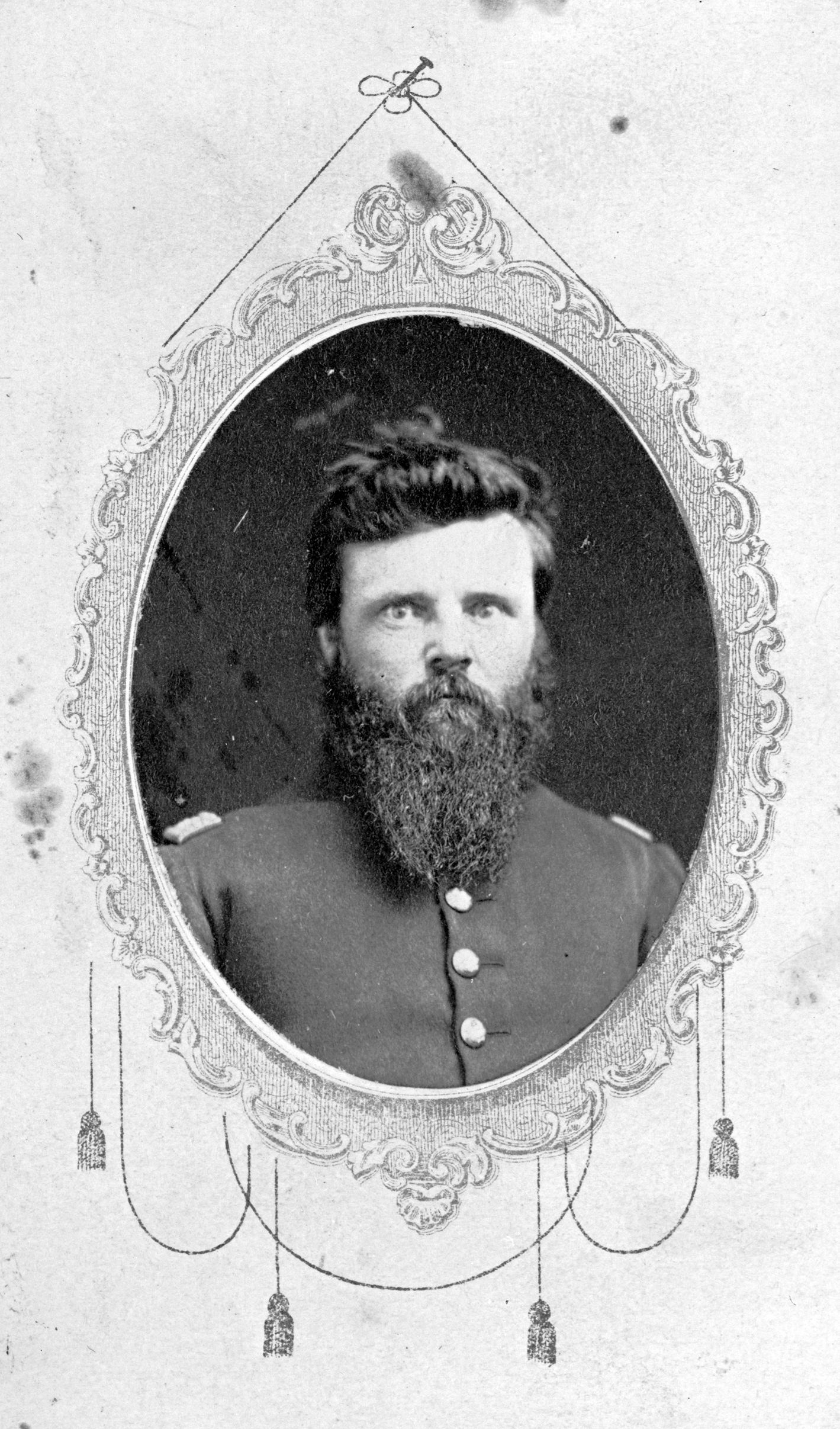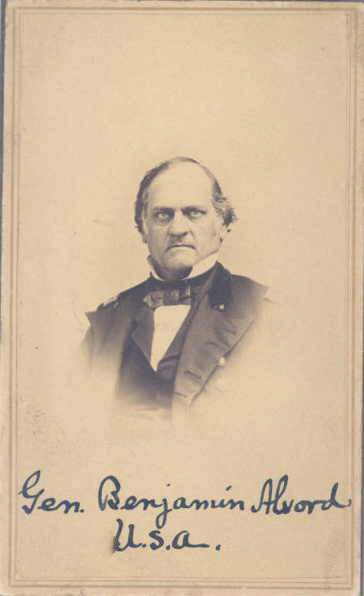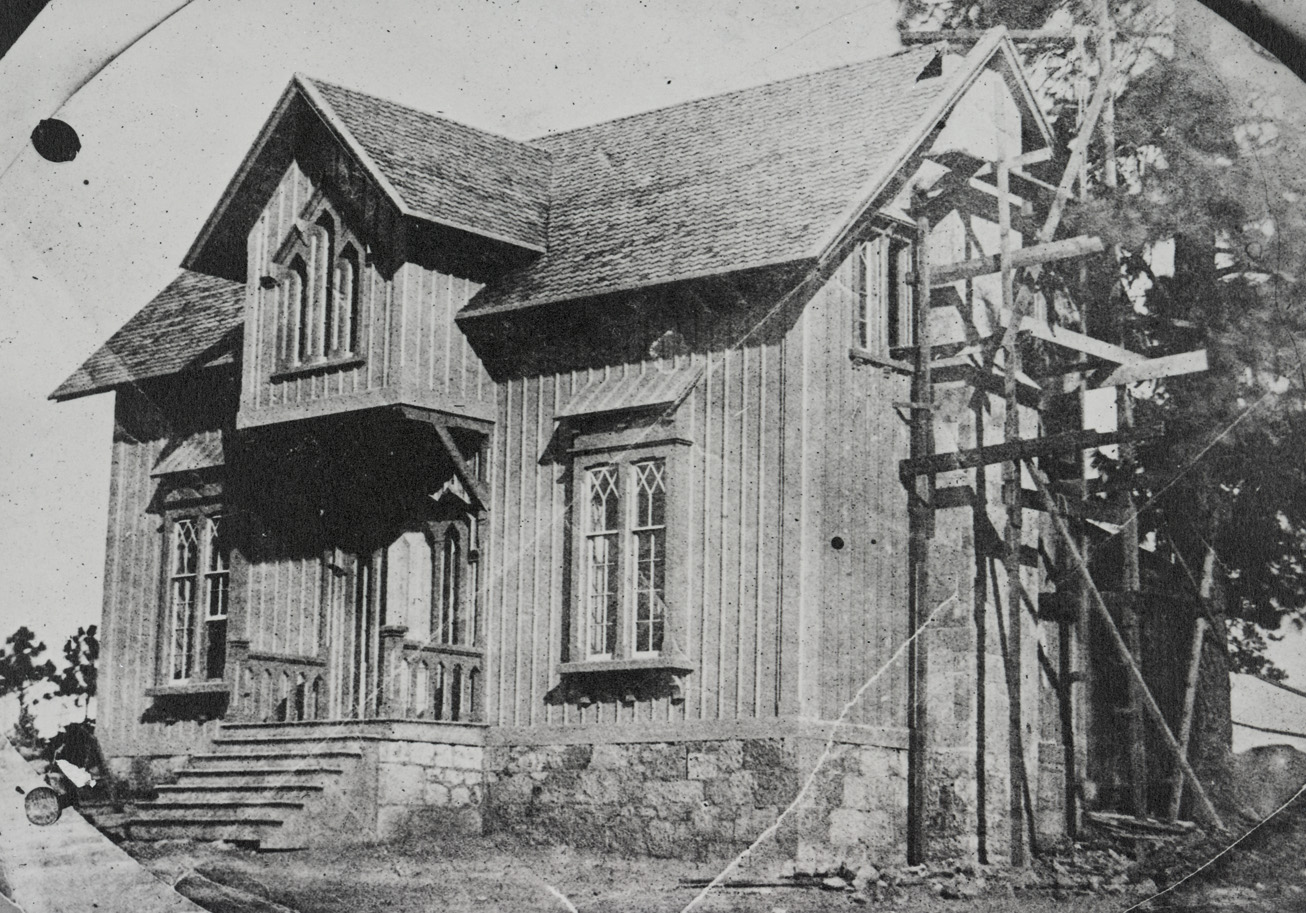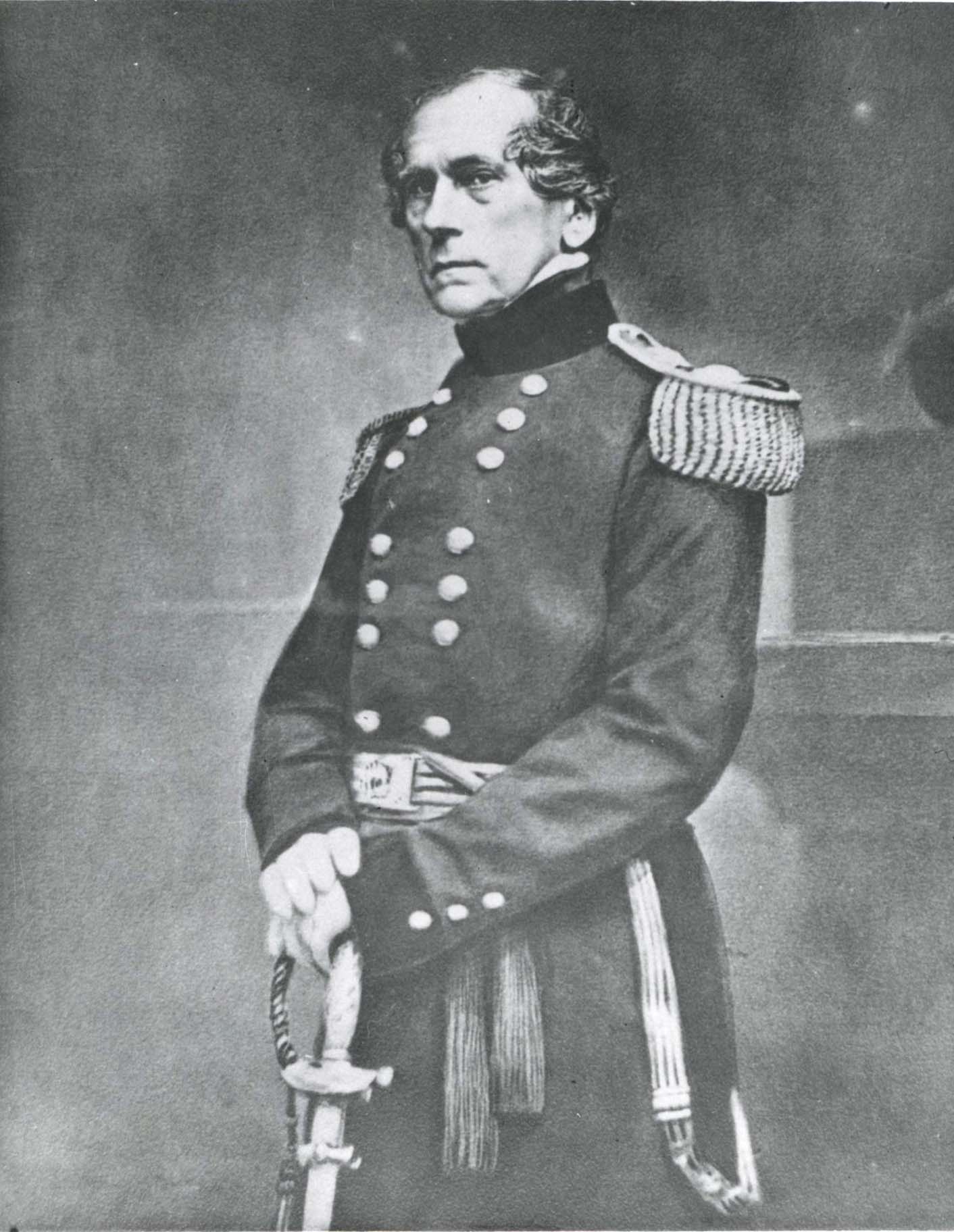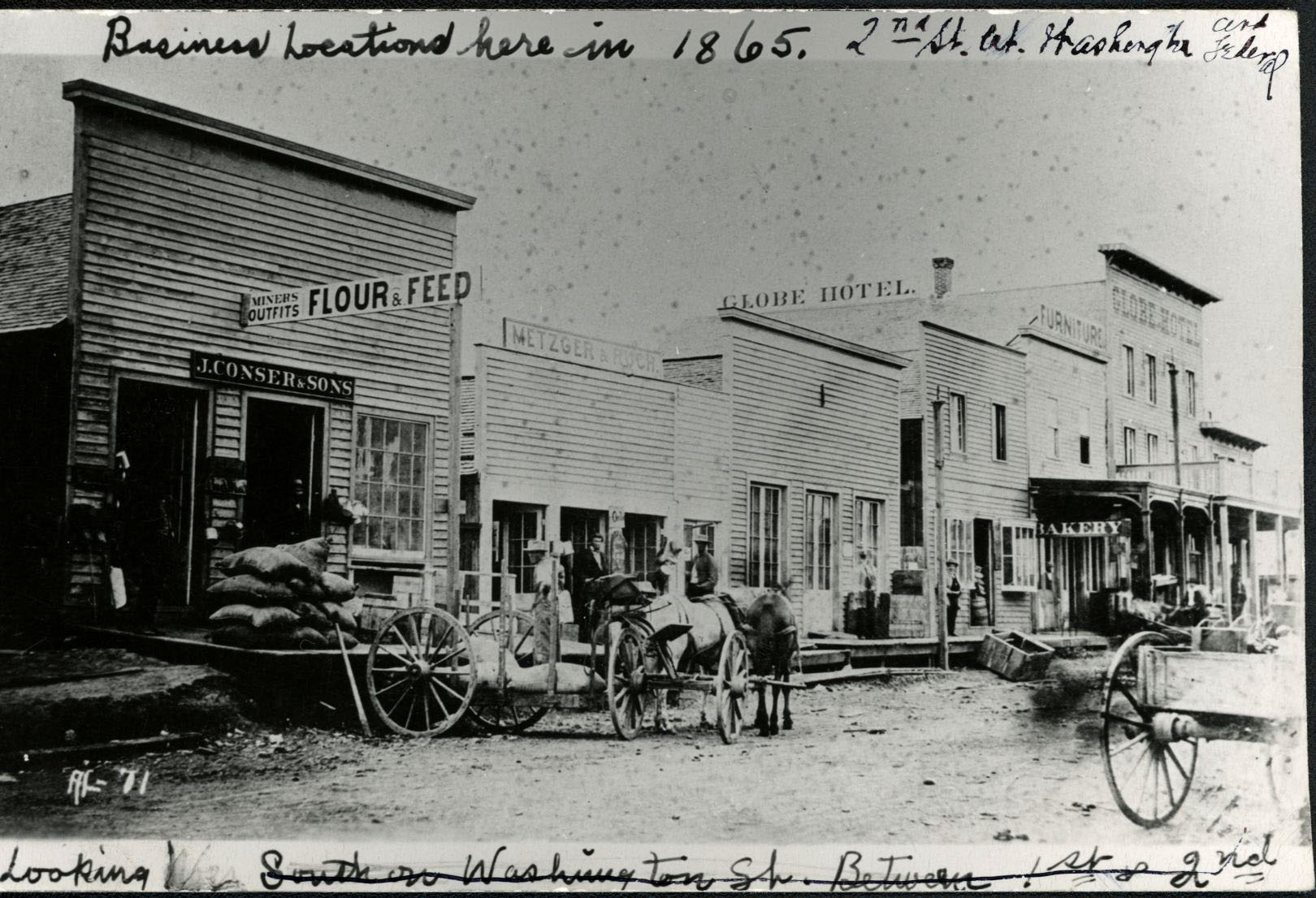Established as a small U.S. Army post in 1850 on a bluff overlooking the Columbia River near Wascopam Mission, Fort Dalles was the primary depot and base of operations for engagements and campaigns against tribes east of the Cascade Mountains between 1856 and 1858. Construction aimed at expanding the fort to make it a “Leavenworth of the Pacific slope” commenced in 1857. The new buildings gave the fort a dramatic Gothic Revival Style that drew national praise and criticism.
The encampment originally was named Camp Drum and, later, Fort Drum for Simon H. Drum, an army officer killed during the Mexican American War. It was designated Fort Dalles in 1853, and by 1856 the garrison consisted of small companies or detachments charged with improving roads that served the Warm Springs Reservation and providing assistance to Oregon Trail emigrants. Commanding officers included George B. Crittenden, Benjamin Alvord, and Gabriel Rains.
When Methodist mission buildings proved inadequate for billeting the two companies of Mounted Rifles first assigned to the post in 1850, the soldiers and local Oregon Trail emigrants helped build the first structures: a log officers’ quarters, a frame quarters for enlisted men, a frame house, a storehouse, a frame stable, a sawmill, two sheds for a blacksmith and a carpenter, and a frame storehouse. Lieutenant Lawrence Kip described the first buildings, unfinished over a year after the army’s arrival, as “remarkably primitive” and noted that “little attention had been bestowed upon their architecture.” That would soon change.
On November 30, 1855, General John E. Wool, commanding the U.S. Army’s Department of the Pacific, ordered the expansion of the post to include an officers’ quarters, company barracks, a storehouse, a hospital, a guardhouse, and a stable refurbishment. At the time, 575 soldiers from the Fourth U.S. Infantry, the Third U.S. Artillery, and the First U.S. Dragoons were stationed at the fort. With the arrival of the Ninth U.S. Infantry regiment in January 1856, Wool directed Colonel George Wright to establish the regimental headquarters at Fort Dalles, “where all troops intended for the Indian Country will be concentrated.” The fort became the primary depot for army operations east of the Cascade Mountains, providing supplies and equipment to campaigns in the Yakama and Palouse regions and posts at Fort Walla Walla and Fort Simcoe.
Captain Thomas Jordan, the assistant quartermaster, oversaw the expansion. Together with Louis Scholl, the supervising architect, he crafted a plan unique to U.S. Army posts, adapting architect Andrew Jackson Downing’s "Picturesque" Gothic cottage-style architecture to a uniform military scale. Downing-inspired elements included square-headed windows, entrance porches, bay windows, pointed gables, and board-and-batten building exteriors. Scholl designed and provided plans for practically every aspect of construction, including the interiors. For the Surgeon’s Quarters, he adapted Design III and the Symmetrical Bracketed Cottage plan from Downing’s The Architecture of Country Houses, adding details such as clustered chimney tops and an arched door frame.
Scholl’s "ground-plan" of August 1857 outlined the post’s atypical layout, which featured fourteen structures, including a commanding officer’s quarters, surgeon’s quarters, captain’s quarters, double officers’ quarters, adjutant’s office, quartermaster’s storehouse, commissary and subsistence storehouse, guardhouse, enlisted men’s quarters, and officers’ mess. Those buildings were aligned with the old log buildings in a rough octagon around a grassy parade ground, with new stables to the northeast and wheelwright and blacksmith shops to the north.
The resulting post received mixed reviews. The deputy quartermaster general labeled the style "entirely unsuited to a Military post on the frontier," while Julia Gillis, an officer’s wife, wrote that she had heard that it was “the best quarters for officers on this coast.” After inspecting the post in 1857, Wool’s replacement, General Newman S. Clarke, required that subsequent construction at posts be “of the plainest kind” and “of the most convenient, and economical procurement of materials for construction." Scholl and Jordan countered charges of fiscal “extravagance” with thorough accounting that totaled construction expenses from 1856 to 1858 at $125,364.55 – less than construction costs accrued at other Department of the Pacific posts, including Fort Vancouver, Benicia, and San Francisco during the same period.
The end of the Yakima War in 1858 diminished the strategic value of Fort Dalles and the commander of the Department of Oregon, General William S. Harney, suspended construction in April 1859. During the Civil War, volunteer units from California, Oregon, and Washington Territory were housed at the fort, which served as a depot for expeditions against Paiutes in southern Oregon. Seventy-five Indian Scouts from the Warm Springs Agency were stationed there in 1867. The fort was abandoned in the summer of 1867.
A ten-square-mile military reservation, established in 1850 and centered on Fort Dalles, was reduced in size by Congress in 1867 and 1871 to allow the City of The Dalles to grow; the remaining military reservation lands were transferred to the Interior Department in 1877. In 1903, a group of women in The Dalles initiated a campaign to preserve the surgeon’s quarters, and Congress deeded the building and adjacent lots of the military reservation to the Oregon Historical Society.
The Old Fort Dalles Historical Society, the first affiliate of the Oregon Historical Society, was organized in 1905, and the Surgeon’s Quarters was opened as a museum. The Surgeon’s Quarters was placed on the National Register of Historic Places in 1971. The Fort Dalles Museum is now operated through the support of the Fort Dalles Museum/Anderson Homestead Foundation.
-
![]()
Company quarters, Fort Dalles.
Courtesy Oregon Hist. Soc. Research Lib., Orhi5351
-
![]()
Horse stables, Old Fort Dalles.
Courtesy Oregon Hist. Soc. Research Lib., orhi78576, pf1039
-
![]()
Captain Thomas Jordan's quarters, Fort Dalles.
Courtesy Oregon Hist. Soc. Research Lib., 66475, pf1039
-
![]()
Surgeon's quarters, Fort Dalles.
Courtesy Oregon Hist. Soc. Research Lib., Orhi5352, pf1039
-
![]()
Old Fort Dalles buildings.
Courtesy Oregon Hist. Soc. Research Lib., 35104 pf1039
-
![]()
Fort Dalles.
Courtesy Oregon Hist. Soc. Research Lib., Orhi5349
-
![]()
Map of the Military Reservation of Fort Dalles, 1860.
Courtesy Oregon Hist. Soc. Research Lib., NARA, Orhi9752, pf1039
-
Fort Dalles, 2016.
Courtesy A.E. Platt
-
Fort Dalles, 2016.
Courtesy A.E. Platt
Related Entries
-
![1st Oregon Volunteer Infantry]()
1st Oregon Volunteer Infantry
During the 1860s, the major military-Indian conflicts of the Pacific No…
-
![Benjamin Alvord (1813-1884)]()
Benjamin Alvord (1813-1884)
An army officer, educator, writer, and naturalist, Benjamin Alvord was …
-
![Fort Dalles Museum]()
Fort Dalles Museum
Fort Dalles Museum sits on a bluff in a residential neighborhood in The…
-
![John E. Wool (1784-1869)]()
John E. Wool (1784-1869)
Although his time spent in Oregon was short, General John E. Wool was a…
-
![The Dalles]()
The Dalles
The Dalles is one of the oldest permanently occupied places in Oregon, …
-
![Wascopam Mission]()
Wascopam Mission
Wascopam Mission, which operated at The Dalles from 1838 to 1847, was t…
Related Historical Records
Map This on the Oregon History WayFinder
The Oregon History Wayfinder is an interactive map that identifies significant places, people, and events in Oregon history.
Further Reading
Knuth, Priscilla. "'Picturesque' Frontier: The Army's Fort Dalles: Part One." Oregon Historical Quarterly 67:4 (December 1966).
Knuth, Priscilla. "'Picturesque' Frontier: The Army's Fort Dalles: Part Two." Oregon Historical Quarterly 68:1 (March 1967).
Gilliss, Julia. So Far from Home: An Army Bride on the Western Frontier, 1865-1869. Portland: Oregon Historical Society Press, 1993.
Kip, Lawrence. Indian War in the Pacific Northwest: The Journal of Lieutenant Lawrence Kip. Lincoln: University of Nebraska Press, 1999.
Scheuerman, Richard D., and Michael O. Finley. Finding Chief Kamiakin: The Life and Legacy of a Northwest Patriot. Pullman: Washington State University Press, 2008.
Schlicke, Carl P. General George Wright: Guardian of the Pacific Coast. Norman: University of Oklahoma Press, 1988.



